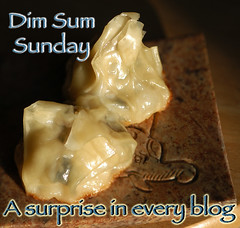
If you want your Thanksgiving turkey to be the star of the meal, you might considering brining. Brining will not only produce a turkey that is moist beyond compare, it also improves the texture of the meat, and imparts amazing flavor to a bird that, let's face it, has a tendency to be a tad on the bland side. And best of all, it's neither expensive nor terribly complicated.
1 gallon vegetable stock
1 c. kosher sea salt
1/2 c. sugar
1 tablespoon whole black peppercorns
1/2 tsp. juniper berries
1 whole head garlic, cut in half to expose cloves
1 medium onion, cut into eighths
2 bay leaves
6 sprigs fresh rosemary, bruised
6 sprigs fresh sage, bruised
6 sprigs fresh thyme, bruised
6 sprigs fresh savory, bruised
1 gallon ice water
2 large trash bags (not made from recycled materials) or
brining bag
ice chest
ice
16 - 20 lb. turkey
additional herbs for roasting (see above)
1/2 medium onion
1 lemon, quartered
Bring stock to simmer in large stockpot. Add salt and sugar, and stir until completely dissolved. Add next 9 ingredients. Cover and allow to simmer for half an hour. Remove from heat, cool to room temperature, then refrigerate for 24 hours prior to actually brining the bird.
24 hours before roasting, remove the giblets and rinse the turkey thoroughly. Line the ice chest with one of the bags, placing the other bag inside of it. Add one gallon of ice water, and the chilled brine mixture and stir a bit. Place turkey in brine, making sure it's completely submerged. Secure the bag and cover all with ice. Set ice chest in a cool place and allow turkey to soak in the brine for 24 hours before roasting.
Preheat the oven to 350 degrees. Remove turkey from brine, and rinse and dry (you won't get crispy brown skin unless the turkey is dry!) thoroughly. Place in large roasting pan. Stuff the cavity with fresh bunches of the same herbs used in the brine, 1/2 an onion, and a lemon that has been cut into quarters. Tie legs with kitchen twine. Brush entire turkey with butter, and cover the breast with foil. Roast, basting with butter (be sure to baste under the foil), until the internal temperature of the thickest part of the thigh reaches 135 degrees. Remove foil, and continue to roast until skin is browned, and internal temperature reaches 160 degrees. Transfer turkey to a platter, and tent with foil (it will continue to cook). Allow turkey to rest while you make the gravy (but no less than 15 minutes) before carving. This allows time for the juices to redistribute.
I guarantee that you will not regret the little bit of extra work - it will pay off in the tenderest, juiciest bird you have ever cooked!
Just a note - the drippings from a brined bird can be very salty! Tomorrow's recipe...gravy!








3 comments:
Java
I'm going to try brining my turkey this year, but not this elaborately. Just salt and water and maybe some of the herbs I'm getting for other recipes (sage, thyme and maybe parsley). I do like your brining method and will try to follow it. We'll see how it goes.
Just be sure that your salt and sugar are dissolved before brining, and you'll be fine!
Thank you for the encouragement!
We got brave and followed most of your instructions.
We even picked Juniper berries off the tree in the backyard. I feel really good about doing it, it was not that hard after watching the video of that cool girl telling how to brine. It was relatively easy, I am glad I had help pouring the brine into the trash bag that was in a bowl for support. I did two turkeys. The first brine I did not cook. The second I heated it up but not for long and then took the boat motor (one of those stick blenders) to it and cut and blended it with that... it smelled good, even the one I did not cook. It feels like Thanksgiving already with those beautiful herby smells in the air.
Thanks so much for the info.
Post a Comment